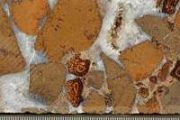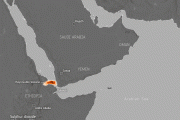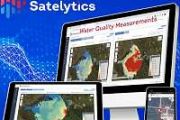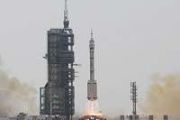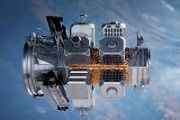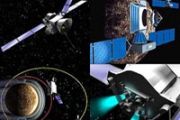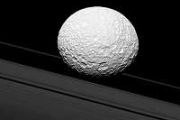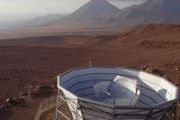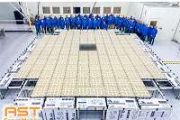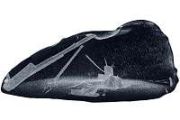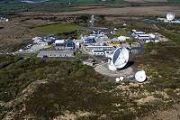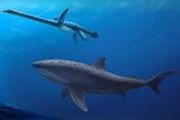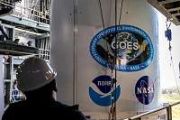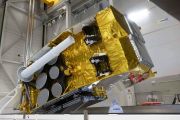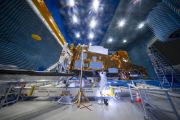
Copernical Team
Party time: Champagne and celebrities mark Branson's space flight

Champagne flowed, guests cheered and Grammy-nominated singer Khalid debuted a new single: British billionaire Richard Branson threw himself a party in the desert to mark his successful first flight into space.
The eccentric septuagenarian founder of Virgin Galactic arrived before dawn at Spaceport America, built in large part at his initiative, in the US state of New Mexico.
The sun rose on the building's futuristic glass facade, located in a region that boasts 340 days of good weather per year.
A small crowd of invited guests, baking under the hot sun, cheered as the space crew climbed into a black SUV and headed for the rocket, which sat at the end of a 3.6 kilometer (2.2 miles) track.
What's a suborbital flight? An aerospace engineer explains

"Suborbital" is a term you'll be hearing a lot as Sir Richard Branson flies aboard Virgin Galactic's VSS Unity winged spaceship and Jeff Bezos flies aboard Blue Origin's New Shepard vehicle to touch the boundary of space and experience a few minutes of weightlessness.
But what exactly is "suborbital?" Simply put, it means that while these vehicles will cross the ill-defined boundary of space, they will not be going fast enough to stay in space once they get there.
If a spacecraft—or anything else, for that matter—reaches a speed of 17,500 mph (28,000 km/h) or more, instead of falling back to the ground, it will continuously fall around the Earth. That continuous falling is what it means to be in orbit and is how satellites and the Moon stay above Earth.
Last Tianlian I satellite placed in orbit
 China launched the last satellite in its Tianlian I relay spacecraft series late on Tuesday night, which also marked the finale of the country's DFH-3 satellite platform.
A Long March 3C carrier rocket blasted off from the Xichang Satellite Launch Center in Sichuan province at 11:52 pm and then placed the Tianlian I-05 satellite into a geostationary orbit, said China Aerospace Science and
China launched the last satellite in its Tianlian I relay spacecraft series late on Tuesday night, which also marked the finale of the country's DFH-3 satellite platform.
A Long March 3C carrier rocket blasted off from the Xichang Satellite Launch Center in Sichuan province at 11:52 pm and then placed the Tianlian I-05 satellite into a geostationary orbit, said China Aerospace Science and OSU drone expertise is supporting the exploration of Earth and the Final Frontier
 As a descendent of pioneers who crossed the Plains 150 years ago to establish a new life in what was then referred to as The Oklahoma Territory, it's ironic that the work that I and others in the State of Oklahoma are doing today related to Unmanned Aerial Systems (UAS) has placed the State back at the center of what can best be described as the new "wild west of aviation."
Although many S
As a descendent of pioneers who crossed the Plains 150 years ago to establish a new life in what was then referred to as The Oklahoma Territory, it's ironic that the work that I and others in the State of Oklahoma are doing today related to Unmanned Aerial Systems (UAS) has placed the State back at the center of what can best be described as the new "wild west of aviation."
Although many S Moscow not excluding dialogue with US on Russia's latest weapons systems
 Moscow is not ruling out a dialogue with the United States on Russia's latest weapons systems if it also includes talks on American prospective hypersonic weapons and other issues, Deputy Foreign Minister Sergey Ryabkov said.
"I do not know, but I think that you can't do it without talking about them [Russian weapons systems]. But equally, Americans must proceed from the fact that we will
Moscow is not ruling out a dialogue with the United States on Russia's latest weapons systems if it also includes talks on American prospective hypersonic weapons and other issues, Deputy Foreign Minister Sergey Ryabkov said.
"I do not know, but I think that you can't do it without talking about them [Russian weapons systems]. But equally, Americans must proceed from the fact that we will Blackjack program deploys two Mandrake 2 satellites
 DARPA successfully deployed two satellites on June 30 as part of the SpaceX Transporter 2 launch. Both Mandrake 2 spacecraft, Able and Baker, are functioning well and progressing through checkout and commissioning.
Conceived as an early risk-reduction flight for DARPA's Blackjack program, the Mandrake 2 mission will prove out advanced laser communications technologies for a broad governmen
DARPA successfully deployed two satellites on June 30 as part of the SpaceX Transporter 2 launch. Both Mandrake 2 spacecraft, Able and Baker, are functioning well and progressing through checkout and commissioning.
Conceived as an early risk-reduction flight for DARPA's Blackjack program, the Mandrake 2 mission will prove out advanced laser communications technologies for a broad governmen Billionaire Richard Branson reaches space in his own ship

Swashbuckling entrepreneur Richard Branson hurtled into space aboard his own winged rocket ship Sunday in his boldest adventure yet, beating out fellow billionaire Jeff Bezos.
The nearly 71-year-old Branson and five crewmates from his Virgin Galactic space tourism company reached an altitude of about 53 miles (88 kilometers) over the New Mexico desert—enough to experience three to four minutes of weightlessness and see the curvature of the Earth—and then safely glided home to a runway landing.
British billionaire Branson takes off for space
 Billionaire Richard Branson took off Sunday from a base in New Mexico aboard a Virgin Galactic vessel bound for the edge of space, a voyage he hopes will lift the nascent space tourism industry off the ground.
A massive carrier plane made a horizontal take-off from Spaceport, New Mexico at around 8:40 am Mountain Time (1440 GMT) and will ascend for around an hour to an altitude of 50,000 fee
Billionaire Richard Branson took off Sunday from a base in New Mexico aboard a Virgin Galactic vessel bound for the edge of space, a voyage he hopes will lift the nascent space tourism industry off the ground.
A massive carrier plane made a horizontal take-off from Spaceport, New Mexico at around 8:40 am Mountain Time (1440 GMT) and will ascend for around an hour to an altitude of 50,000 fee Virgin Galactic spaceship carrying Branson touches down
 A Virgin Galactic spaceship carrying Richard Branson touched down Sunday after a voyage the British billionaire called an "experience of a lifetime."
"Congratulations to all our wonderful team at Virgin Galactic for 17 years of hard hard work to get us this far," he said during a live feed as the VSS Unity spaceship glided back to Spaceport America in New Mexico.
It reached a peak al
A Virgin Galactic spaceship carrying Richard Branson touched down Sunday after a voyage the British billionaire called an "experience of a lifetime."
"Congratulations to all our wonderful team at Virgin Galactic for 17 years of hard hard work to get us this far," he said during a live feed as the VSS Unity spaceship glided back to Spaceport America in New Mexico.
It reached a peak al 'Experience of a lifetime': Billionaire Branson achieves space dream
 British billionaire Richard Branson flew into space Sunday aboard a Virgin Galactic vessel, a voyage he described as the "experience of a lifetime" - and one he hopes will usher in an era of lucrative space tourism.
"Congratulations to all our wonderful team at Virgin Galactic for 17 years of hard, hard work to get us this far," he said during a live feed as the VSS Unity spaceship glided
British billionaire Richard Branson flew into space Sunday aboard a Virgin Galactic vessel, a voyage he described as the "experience of a lifetime" - and one he hopes will usher in an era of lucrative space tourism.
"Congratulations to all our wonderful team at Virgin Galactic for 17 years of hard, hard work to get us this far," he said during a live feed as the VSS Unity spaceship glided 




